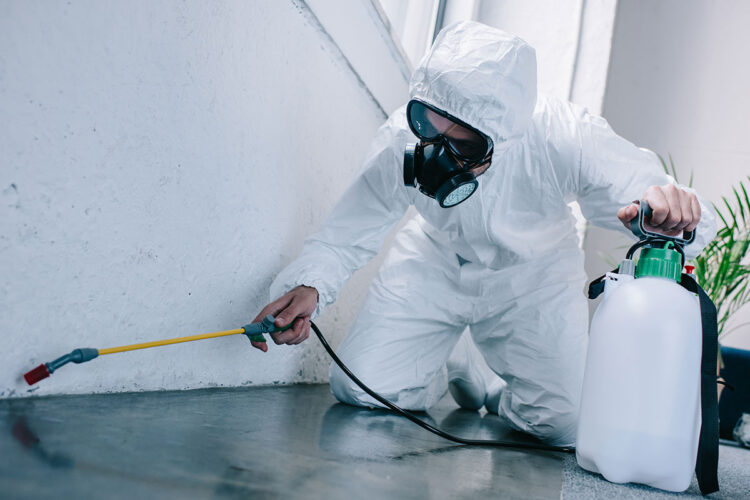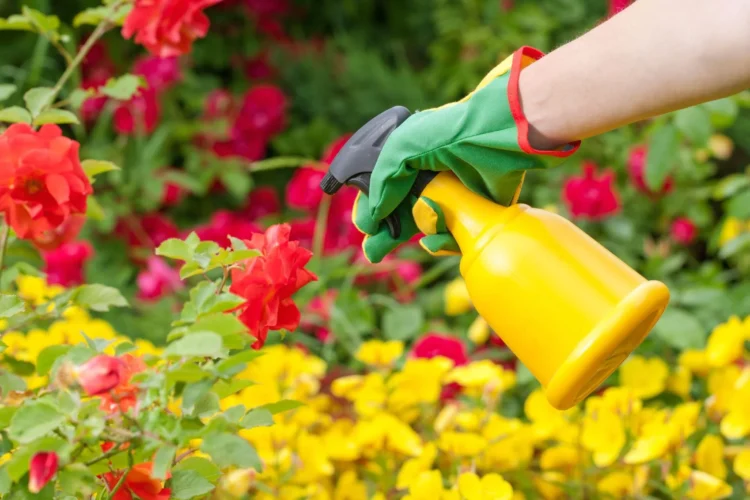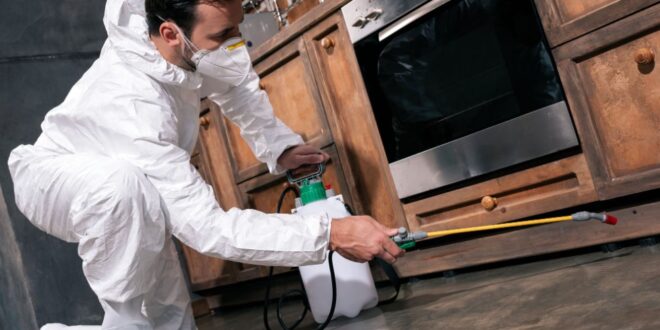Your home is your sanctuary, and it deserves protection from unwanted invaders that may not just cause damage to your property but also pose risks to your health and well-being. Pests can range from mere nuisances to severe threats, and understanding this spectrum is vital.
Pest control is an often-overlooked aspect of homeownership that’s not just essential but often inevitable. Whether it’s a trail of ants invading your kitchen, a wasp nest hanging from the eaves, or the dreaded sound of rodents in the attic, dealing with pests is a reality that many homeowners will face. And when those first signs appear, you’re sure to be under a lot of stress and pressure to deal with it in the best way possible.
This guide will help you identify and understand the steps necessary for effective pest control.
Do Safely And Correctly Use Pesticides

While effective, the decision to use pesticides should never be taken lightly, as improper usage can result in adverse effects on both human health and the environment.
These guidelines lead you toward the safe and correct use of pesticides:
- Choose the right pesticide ─ Not all pesticides work on all pests. Carefully read the product labels to ensure the pesticide is designed for the specific pests you are dealing with. For instance, say you’re dealing with flies. OpenHouse Home Insurance suggests studying how to get rid of flies first and then seeing whether or not pesticide is a solution for the problem. Using the wrong pesticide can be ineffective and unnecessarily introduce harmful chemicals into your environment.
- Read and follow instructions ─ Each pesticide has specific instructions, including safety measures, which are crucial to follow. This could involve wearing protective clothing or masks or avoiding application in certain weather conditions.
- Use the right quantity ─ More is not always better. Applying more pesticides than recommended does not necessarily mean it will be more effective. In fact, it could be harmful and may lead to pesticide resistance in pests.
- Proper storage and disposal ─ Pesticides should be stored in their original containers, out of reach of children and pets, and in a locked cabinet if possible. After use, don’t forget to safely dispose of empty containers and unused pesticides according to your local regulations.
- Consider timing and weather ─ The timing and weather conditions can impact the effectiveness of the pesticide. Some pesticides may require dry conditions, others may need to be applied at a specific time of day, and some may be less effective if it rains shortly after application.
- Monitor after application ─ Keep a close eye on the treated area after application. This allows you to see if the treatment is effective and if the pests return, indicating the need for further action.
When in doubt, consult a professional pest control service to ensure the job is done safely and effectively.
Inspect Your Home’s Exterior For Access Points

Pests are resourceful creatures and can squeeze through the tiniest openings to enter your home.
Here are some key areas to inspect and steps to take to secure them:
- Windows and doors ─ Check for cracks or gaps around your windows and doors. Small spaces can provide entry for pests like ants and spiders. Seal any cracks with caulk, and ensure that window screens are intact. Weather stripping can also be used to seal gaps beneath doors.
- Roof and eaves ─ Your roof can be an access point for larger pests like raccoons or squirrels. Regularly inspect your roof for signs of damage or entry points. Pay particular attention to the areas where eaves meet the roof, as these are often prime entry points for pests.
- Vents and chimneys ─ Ensure all vents have tight-fitting covers to prevent pests from entering. Your chimney should also be capped or screened to avoid the entry of birds, bats, or squirrels.
- Utility lines and pipes ─ Pests can enter your home via spaces around utility lines or pipes. Seal any gaps where utilities come into your home, including gas lines, air conditioning units, and cable or internet lines.
- Foundation and walls ─ Check your home’s exterior walls and foundation for cracks, crevices, or holes. These can be access points for pests like rats and mice. Larger cracks should be repaired, while smaller cracks and crevices can be sealed using caulk or foam sealant.
- Landscaping ─ Keep tree branches and shrubs trimmed back from your home. These can provide a bridge for pests to reach your home, especially to areas like the roof, where they can find a way in.
By regularly inspecting your home and promptly addressing any potential access points, you can significantly reduce the likelihood of a pest infestation.
Plant Fresh Herbs Around Your Home

Incorporating certain fresh herbs into your home’s landscape design is an eco-friendly and aesthetically pleasing method of pest control. Not only do these herbs add to the overall appeal of your garden, but they also produce scents that naturally deter certain types of pests.
Here are some herbs to consider:
- Basil ─ This aromatic herb is excellent for your Italian dishes and is known to repel houseflies and mosquitoes. Consider planting it around windows, entrances, and outdoor seating areas.
- Mint ─ The strong scent of mint is a natural deterrent for many insects, including ants and mosquitoes. Plant it in pots near doorways and windows to prevent these pests from entering your home.
- Lemongrass ─ This herb contains citronella, a natural oil that repels mosquitoes. It grows well in pots, so consider placing some on your patio or other outdoor areas where you spend time.
- Rosemary ─ Apart from its culinary uses, rosemary’s strong fragrance can repel mosquitoes and other bugs.
- Lavender ─ Although many people enjoy the smell of lavender, many pests do not. It can help repel flies, mosquitoes, and moths. Plant it in sunny areas of the garden or near the windows of your house.
- Chrysanthemums ─ These beautiful flowers contain a compound called pyrethrum, used in many commercial insect repellents. They’re effective at deterring various pests, including ants, ticks, roaches, beetles, and lice.
While these herbs can deter pests, remember they’re not a comprehensive solution for more severe or persistent infestations. Always watch for signs of pests and take action when necessary, whether through further natural methods or professional pest control services.
Final Thoughts
Dealing with pests can be extremely stressful, but this guide has given you everything homeowners need to know when dealing with various intruders. However, the journey toward maintaining a pest-free home doesn’t end with those tips.
Continuous vigilance is necessary to keep these unwanted guests at bay. Pest control is a homeowner’s responsibility, but remember, it is not one you must shoulder alone. Professionals are available to assist and guide you through the process, providing the peace of mind that comes with knowing your home is protected from pests.
 Hi Boox Popular Magazine 2024
Hi Boox Popular Magazine 2024



